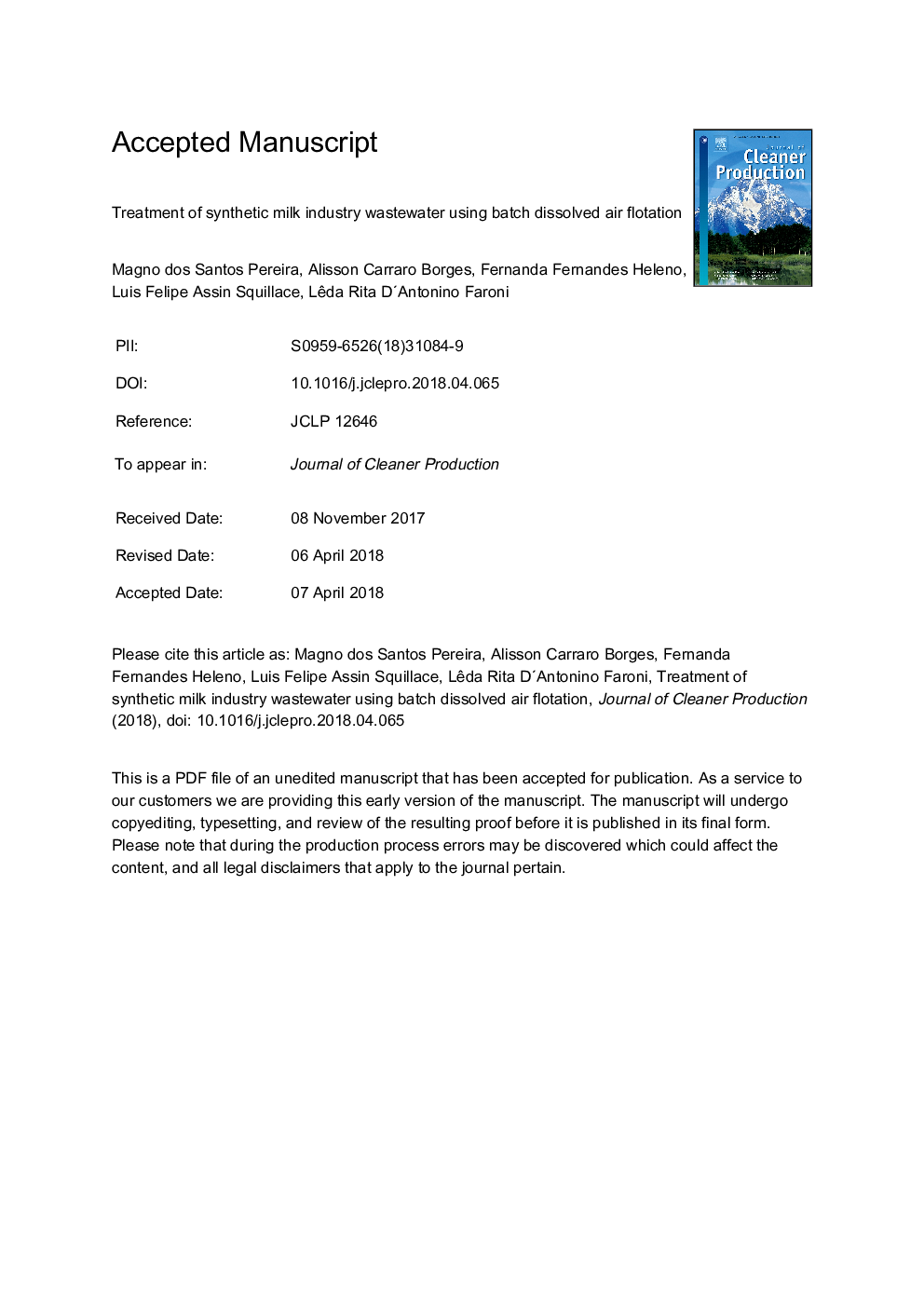| Article ID | Journal | Published Year | Pages | File Type |
|---|---|---|---|---|
| 8095263 | Journal of Cleaner Production | 2018 | 27 Pages |
Abstract
Milk industry is one of the most important economy sectors in Brazil and in many countries. However, it is also the sector that most generates environmental impacts due to the large volume of waste generated and its high polluting load. The objective of this study is to evaluate the efficiency of a dissolved air flotation system to treat a synthetic milk industry wastewater. In the experiment, batch tests were carried out using a dissolved air flotation bench system with a flotation column and utilizing the turbidity removal efficiency as response variable for the analyses. For the study of the process, an experimental design was used to optimize the process, in two stages and in acid and basic media separately. In the first stage, a fractionated factorial design was used to test five factors and its range of values: Saturation pressure (4-10â¯bar); recirculation ratio (20-100%); pH (3-12); coagulant doses Ferrous sulfate (0-1000â¯mgâ¯Lâ1) and cationic organic polymer TanFloc (0-50â¯mgâ¯Lâ1). In the second stage a central rotational compound was designed for optimization of the process and determination of the best treatment. The inferences were made using: Pareto graph; generated models with their respective statistical parameters; contour plots and the response optimization function. As a result of the experiment it was possible to verify that the factors that significantly (pâ¯â¤â¯0.1) affected the flotation process were the saturation pressure, pH and coagulant dose. The optimum treatment determined in the second phase was obtained in acid medium using saturation pressure of 10â¯bar, recirculation ratio of 20%, pH of 4 and ferrous sulfate concentration of 250.0â¯mgâ¯Lâ1, obtaining removal efficiencies of 97.8% (turbidity), 83.1% (color), and 87.5% (chemical oxygen demand). The new approach used to study the optimization of the dissolved air flotation process proved to be a useful tool to determine the relevant factors and best operating parameters for the treatment of milk industry wastewater.
Related Topics
Physical Sciences and Engineering
Energy
Renewable Energy, Sustainability and the Environment
Authors
Magno dos Santos Pereira, Alisson Carraro Borges, Fernanda Fernandes Heleno, Luis Felipe Assin Squillace, Lêda Rita D'Antonino Faroni,
